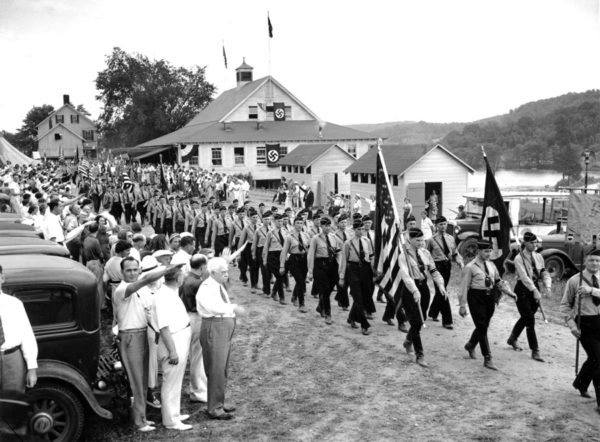Have you ever heard the expression, “Walk softly but carry a big stick”? Well, our discussion today centers around a gentleman who was nicknamed, “The Little Man with the Big Stick.” No, this isn’t about Sheriff Buford Pusser, the subject of the movie, Walking Tall (1973 & 2004). However, it is about another peace officer and someone who contributed heavily to the advancement of law enforcement.
Did You Know?
Did you know there are former top-secret German files that were discovered in May 1945 at the Marburg Castle, Hesse? You say, “So what, there were a lot of secret files found in the aftermath of the war.” True, but these files are known as the Windsor Files, or Duke of Windsor Files.
In return for his release, a captured German soldier agreed to take the chief of the British documents team to a cache of documents he had buried on the grounds of Marburg Castle. Tons of documents were uncovered and transferred to the castle for review. As they examined the documents, the team found at least sixty pieces of correspondence between the Duke of Windsor and senior Nazi officials. The documents were forwarded to Winston Churchill and after discussing the situation with King George VI, it was decided to suppress the documents and never reveal their existence to the public.
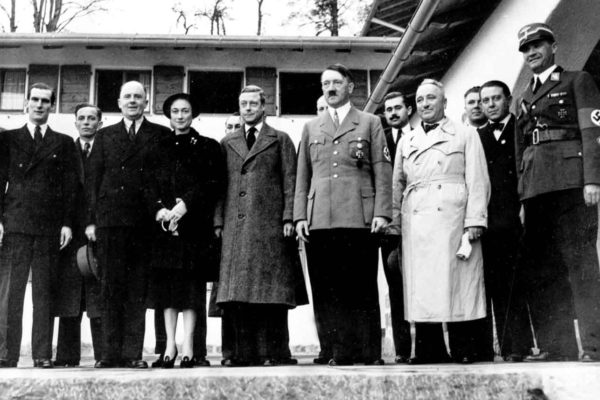
Hitler came up with a plot to kidnap the Duke and Duchess of Windsor while they were in Spain during July 1940. The Duke had just been appointed the Governor of the Bahamas. (King George VI stuck his brother, the former king, in a place where the government thought he’d be harmless and out of the way.) The Nazis believed that the Duke of Windsor was sympathetic to their cause and he was the best option for achieving a peace accord with Britain. They told the Duke that his brother and the prime minister were going to have him assassinated upon arrival in the Bahamas. If he cooperated, the Nazis would reinstate him as king (as Edward VIII, he abdicated the throne in late 1936) and officially recognize Wallis (his wife) as queen. The Duke accepted his British assignment and the Windsors moved to the Bahamas without incident. The kidnap plot failed.
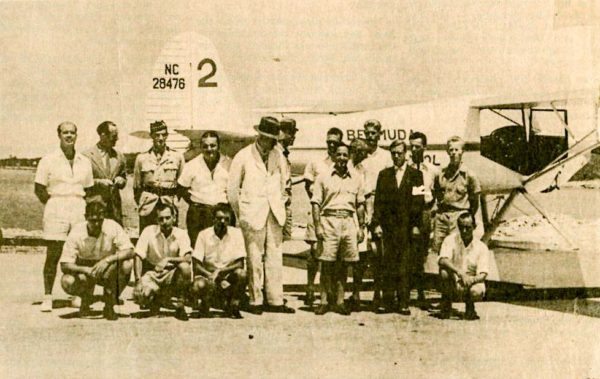
The documents were released in batches between 1954 and 1996. Before the Duke of Windsor died in 1972, many of the documents became public and quite understandably, he became quite perturbed. There is no evidence that the former king ever cooperated with Hitler. It is true that the Duke admired Hitler, but the Duke of Windsor proved to be of “strong English mentality.” In hindsight, the Nazi plot was rather clumsy.
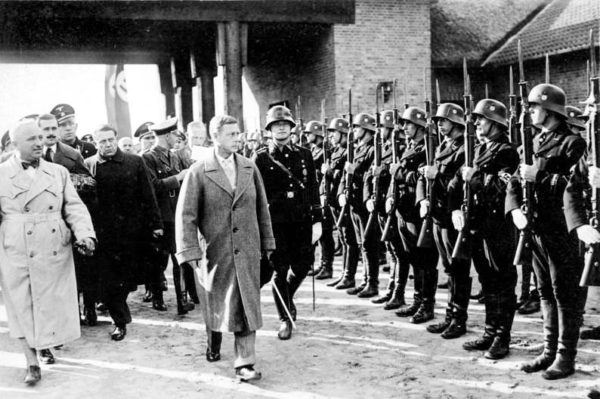
Click here to watch the video clip Uncovering the British Royal Family’s Correspondence with Nazi Germany: The Marburg Files.
Louis Lépine
Louis Lépine (1846−1933) was a lawyer, politician, and inventor. He was the préfet de police between 1893 and 1897 and again from 1899 to 1913. In other words, Lépine was chief of police for Paris.

Lépine was born in Lyon, France and studied in Lyon, Paris, and Heidelberg (Germany). He served in the French military during the Franco-Prussian War (1870−1871) and was recognized for his bravery during an attack by the Prussians.
Following his discharge, Lépine’s career started in law and then as a public servant. He served as deputy préfet of four departments and then as préfet in three others. (A préfet, or prefect is the state’s representative to a region or department; there are twenty-two regions in France with ninety-seven departments within the regions.)
In 1893, Lépine’s reputation earned him the appointment as prefect of police in Paris. His predecessor was fired due to his inability to contain student riots. It would be Lépine’s skills at directing crowd control that added to his aura of discipline.
Beginning in September 1897, Louis Lépine was appointed to serve as governor-general of Algeria. However, within two years, Lépine was brought back to Paris to begin his second term as police chief. France was experiencing civil unrest (the Dreyfus Affair contributed to the unrest) and who better to control the demonstrations than Lépine?
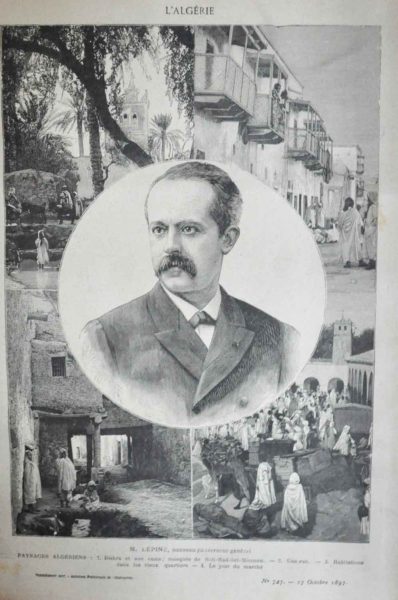
Bal des Quat’z’Arts and the 1893 Student Uprising
The Bal des Quat’z’Arts, or “Four Arts Ball” was an annual ball held in the bohemian district of Montmartre in Paris. It was attended by students of architecture, painting, sculpture, and engraving (the “four arts”). It was basically a time to party, get drunk, and watch nude women prance around. One of those women was Marie Royer (aka Sarah Brown, or the “Queen of Bohemia”). She painted her body and posed as a nude model at the 1893 Bal des Quat’z’Arts carnival. Unfortunately, the police took a dim view to her performance and arrested her. This led to one of the most famous student riots of 19th-century Paris.

The student riots began on the Left Bank after the police arrested Marie Royer and two students; one of whom was killed after a confrontation with a policeman. The riots became larger and more dangerous with thousands of angry people converging on and entering the government’s Chamber of Deputies (does all of this sound familiar?). After the police had lost control of the situation, the National Guard was called in. After several days of bloodshed, members of the workers unions joined the rioters. Now, the mob was ready to take control of Paris and the Third Republic was in trouble and the government sent in the army.
This was the situation that Louis Lépine inherited as the new police chief and he was prepared to use the “big stick.” However, he allowed various groups to march through the city, but they were kept apart and by staging the marches, the groups arrived at the planned destination at different times. Lépine’s methods were very successful at controlling the crowds and it was a good start for the new chief.
Police Modernization (First Term)
Louis Lépine is best known for modernizing the Paris police force and introducing methods that are still used today by law enforcement. The first hurdle was to overcome the publics’ distrust of the police⏤corruption and low standards defined the Paris police force. He began to codify procedures and regulations and required police officers to take examinations in order to qualify for promotions. Most importantly, Lépine introduced his detectives to forensic science for the first time as well as using fingerprinting for identification purposes. Lépine also brought criminology to the police force including examining the psychology of criminals (think of the serial killer profile established by the FBI in the 1970s and 1980s).
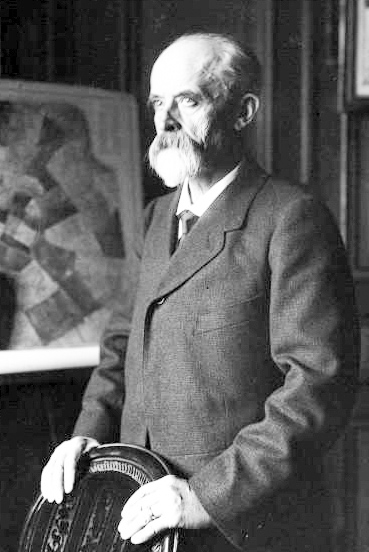
Other improvements introduced by Lépine included revamping traffic patterns in the city. He changed some of the streets to one-way and created the roundabouts. Whenever you see police boats on the Seine or police on bicycles, remember Louis Lépine⏤he started both. The white stick the police use to direct traffic was his idea.
The Second Term
Two years after his appointment to Algeria, Lépine was ordered back to Paris in 1899 to begin his second term as police chief. Like his first term, France and Paris were experiencing civil unrest. This time it was the Dreyfus Affair. A Jewish army officer, Alfred Dreyfus, had been convicted of treason in 1894 and sentenced to Devils Island where he remained for five years. During that time, it was determined another officer had committed the crime and Dreyfus was brought back to France albeit to stand trial a second time. Again, he was convicted (by the same military judges who convicted him before) but freed. It wasn’t until 1906 that Dreyfus was exonerated. The Dreyfus Affair divided the country, friends, and families. Paris was on the verge of violence when Lépine came back. However, Lépine managed to diffuse the situation through his tactics and the police were able to control the civil strife. Again, another feather in his cap.
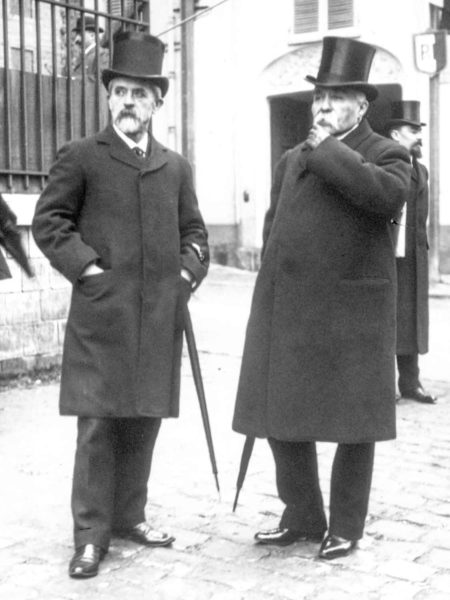
During his last ten years as police chief, Lépine continued his police reforms. He also founded the Musée des collections historiques de la prefecture de police, or commonly known as Musée de la prefecture de police (Museum of Police History). In 1912, Lépine started a detective training school instructing the students in modern forensic methods. It was the first of its kind and copied by many other police departments.
Click here to watch a video tour of the museum.
The Great Flood of Paris
In late January 1910, the Seine River rose to 28.3 feet and flooded Paris. The flood caused extensive damage to property and thousands of people were forced to flee their homes. Lépine’s office was responsible for public health and with his usual discipline and authoritarian style, Lépine took charge. He directed efforts to save the city and afterward, established new procedures to deal with floods. Additionally, Lépine addressed controversial issues concerning chemical cleansing and causes of water-borne diseases.
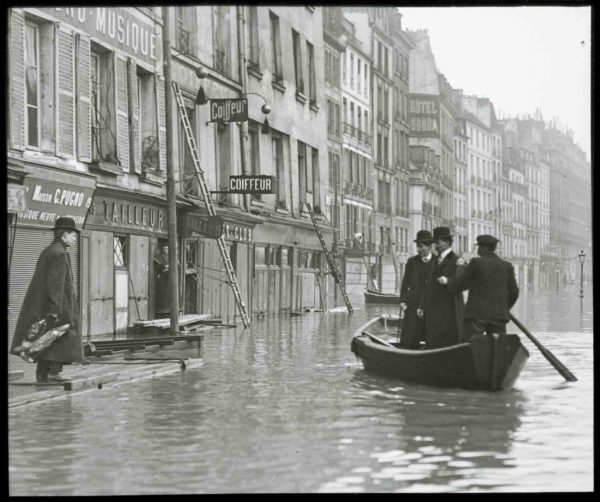
Click here to watch the video clip When Paris Turned Into Venice in Floods of 1910.
Theft of the Mona Lisa
On the morning of 22 August 1911, someone noticed the Leonardo d’Vinci painting, the Mona Lisa, was missing from its usual spot in the Louvre. Lépine was called in and assigned one hundred policemen to the case. The museum was cleared, and the police searched the building from the roof to the cellar. (For those of you who have been to the Louvre, you can appreciate that monumental task.) Lépine’s theory was that a disgruntled employee was responsible for the theft. The painting’s frame had been left behind and a fingerprint was lifted. Unfortunately, this did not lead anywhere. Several people came under suspicion including the French poet, Guillaume Apollinaire, and Pablo Picasso⏤both were later exonerated. Lépin and the French police were hard pressed to solve the crime.
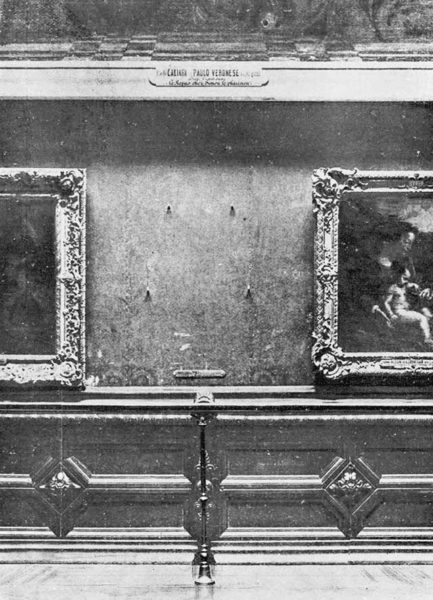
Click here to watch the video clip Stealing the Mona Lisa: The Art Theft of the Century.
Lépine had been correct and should have followed his instinct. The thief turned out to be a Louvre employee, Vincenzo Peruggia (1881−1925). He wanted to return the painting to Italy where he felt it rightfully belonged. (Peruggia mistakenly thought Napoléon had stolen the painting when in fact, Leonardo gifted the painting to the French king, François Ier of France.) Two years after the theft, Peruggia tried selling the painting to the Uffizi Gallery (Florence, Italy). Peruggia helped build the painting’s frame and it was his fingerprint that Lépine’s men lifted two years earlier. In the final analysis, overlooked clues did not help enhance Lépine’s reputation but eventually, the Mona Lisa was returned to the Louvre. Peruggia went on trial and was convicted. He was sentenced to one year and fifteen days. Declared a national patriot, Peruggia served only seven months.
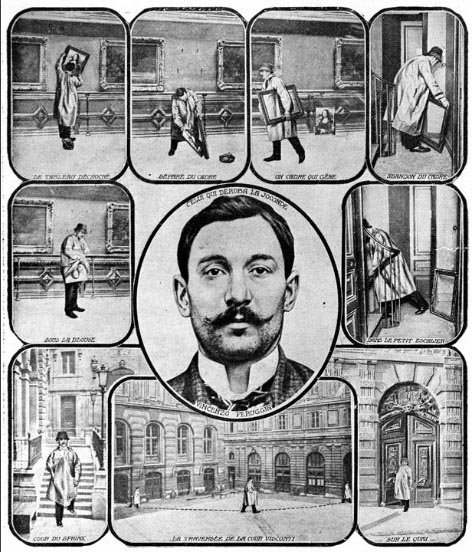

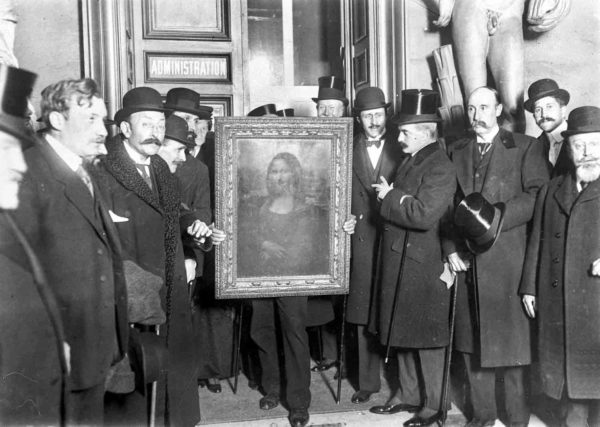
The Bonnot Gang
Another famous case that Lépine was involved with was the capture and destruction of the anarchist group known as the Bonnot Gang. Jules Bonnot (1876−1912) was a bank robber, agitator, and anarchist who became involved in counterfeiting, burglaries, and auto theft. He showed up in Paris and joined an anarchist group in December 1911. Although never the leader of the gang, the media dubbed it the “Bonnot Gang.”
Lépine was ready for his next assignment. In response to the Bonnot Gang, he created a specialized crime unit called La brigade criminelle whose purpose was to gather intelligence and hunt down high-profile criminals. First on its agenda was Lépine’s order to capture Jules Bonnot and the gang. The police chief’s first opportunity to catch Bonnot did not go well.
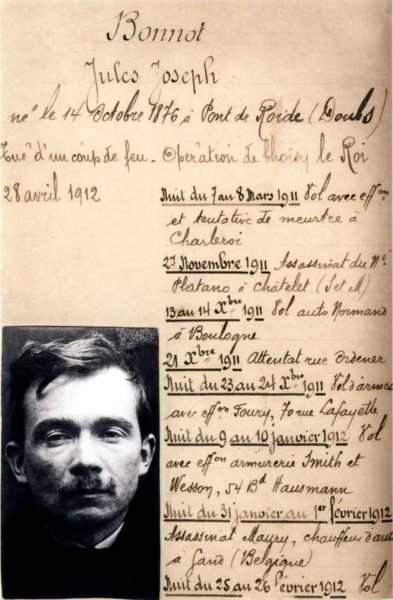
The criminal group split up in April 1912 and shortly afterward, police cornered Bonnot in an apartment. A gun fight broke out and Bonnot killed the vice-chief of police and wounded another officer. Fleeing over the rooftops, Bonnot became France’s “Enemy Number One.” Four days later, Lépine and La brigade criminelle traced him to a house in one of the suburbs of Paris. Five hundred police, soldiers, and other armed citizens engaged Bonnot in a lengthy armed siege. Lépin ordered the building to be blown up and the police chief personally delivered the final shot ending Bonnot’s life.

Click here to watch the video clip Shootout With a Parisian Crime Boss.
Retirement
Louis Lépin retired in 1913. He published his memoirs in 1929, four years before his death. Lépin is buried in the Cimèterie des Gonards located in the village of Versailles. The Paris police headquarters is located on the Île de la Cité and the large open square in front is named place Louis Lépine.
★ ★ ★ Learn More About Louise Lépine ★ ★ ★
Musée de la prefecture de police
Click here to go to the museum web-site.
The Musée de la prefecture de police is located at 4, rue de la Montagne-Sainte-Geneviève in the fifth district. It is a museum of police history. Its exhibits include guillotine blades, a World War II execution pole, and the July 1793 police notes written after Charlotte Corday murdered Jean-Paul Marat in his bathtub. Artifacts from the French serial killer, Henri Landru, are on display (click here to read the blog, The Parisian Bluebeard is Guillotined).
Parry, Richard. The Bonnot Gang: The Story of the French Illegalists. Oakland: PM Press, 2016.
Disclaimer:
There may be a chance that after we publish this particular blog, the video links associated with the blog are no longer accessible. We have no control over this. Many times, whoever posts the video has done so without the consent of the video’s owner. In some cases, it is likely that the content is deemed unsuitable by YouTube. We apologize if you have tried to access the link and you don’t get the expected results.
What’s New With Sandy and Stew?
We are working closely with Roy, our book designer. Roy constructs our books and is the creative genius behind them. It is a long and tedious process but when completed, we will have a quality product for you to read. Our hope is that by the end of May, we can send the final manuscript to our printer in Nashville. Thanks for hanging in there with us. On another note, I am working on and making great progress on volume two of Where Did They Put the Gestapo Headquarters? Sandy and I have turned the corner and we are going out to lunch again every day⏤we got our jabs (and can prove it to the airlines and cruise lines) and ditched our masks.
Thank you to all of you who subscribe to our bi-weekly blogs. It seems there isn’t a day that goes by where we don’t increase our readership. Please let your history buff friends and family members know about our blog site and blogs.
Someone Is Commenting On Our Blogs
Thanks to Flor Kent for reaching out to me regarding our blog, Kindertransport and Mr. Winton, the story of Nicholas Winton and how he and others saved the lives of Jewish children (click here to read the blog). You may recognize Flor’s name from the blog. She is the artist who sculpted the figures of Mr. Winton and the children seen at the Prague Main railway station and the Liverpool Street Station in London. The Liverpool station was the destination and safe haven for the children escaping the Nazis. Please take a minute and visit with Flor at these sites:
Click here to visit Flor’s web-site.
Click here to see more of her work.
I’d also like to thank Martin B. for contacting us after he read our blog, Hang ‘Em or Hire ‘Em (click here to read the blog). Martin recommended the book, The Hidden Nazi by Dean Reuter. It is the story of SS-Obergruppenführer Hans Kammler (1901−1945?) who was responsible for the construction of the Nazi extermination camps and then went on to work for Albert Speer in the construction of the underground V-1 and V-2 rocket facilities. He was a despicable person and someone whose death was never really confirmed. There is some speculation that he was protected from prosecution by the Americans under Operation Paperclip. Thanks Martin, for the recommendation.
If there is a topic you’d like to see a blog written about, please don’t hesitate to contact me. I love hearing from you so keep those comments coming.
Why Would You Want to Buy Our Walking Through History Books?
Simple.
You like to travel and experience history and historical events. You like to see original buildings that had a significant impact on the people and events of the history you’re engaged with. You want to know the stories behind the brick and mortar in front of you.
The walking tour books are meticulously researched so you can go directly to those sites and learn about the building’s history as well as an introduction to some of the more interesting people associated with it.
We Need Your Help
Please tell your friends about our blog site and encourage them to visit and subscribe. Sandy and I are trying to increase our audience and we need your help through your friends and social media followers.
Thank You
Sandy and I appreciate you visiting with us. We have some exciting things on the horizon, and we’ll keep you updated as we go along.
Share This:
Follow Stew:
Find Stew’s books on Amazon and iBooks.
Please note that we do not and will not take compensation from individuals or companies mentioned or promoted in the blogs.
 Walks Through History
Walks Through History
Copyright © 2021 Stew Ross

